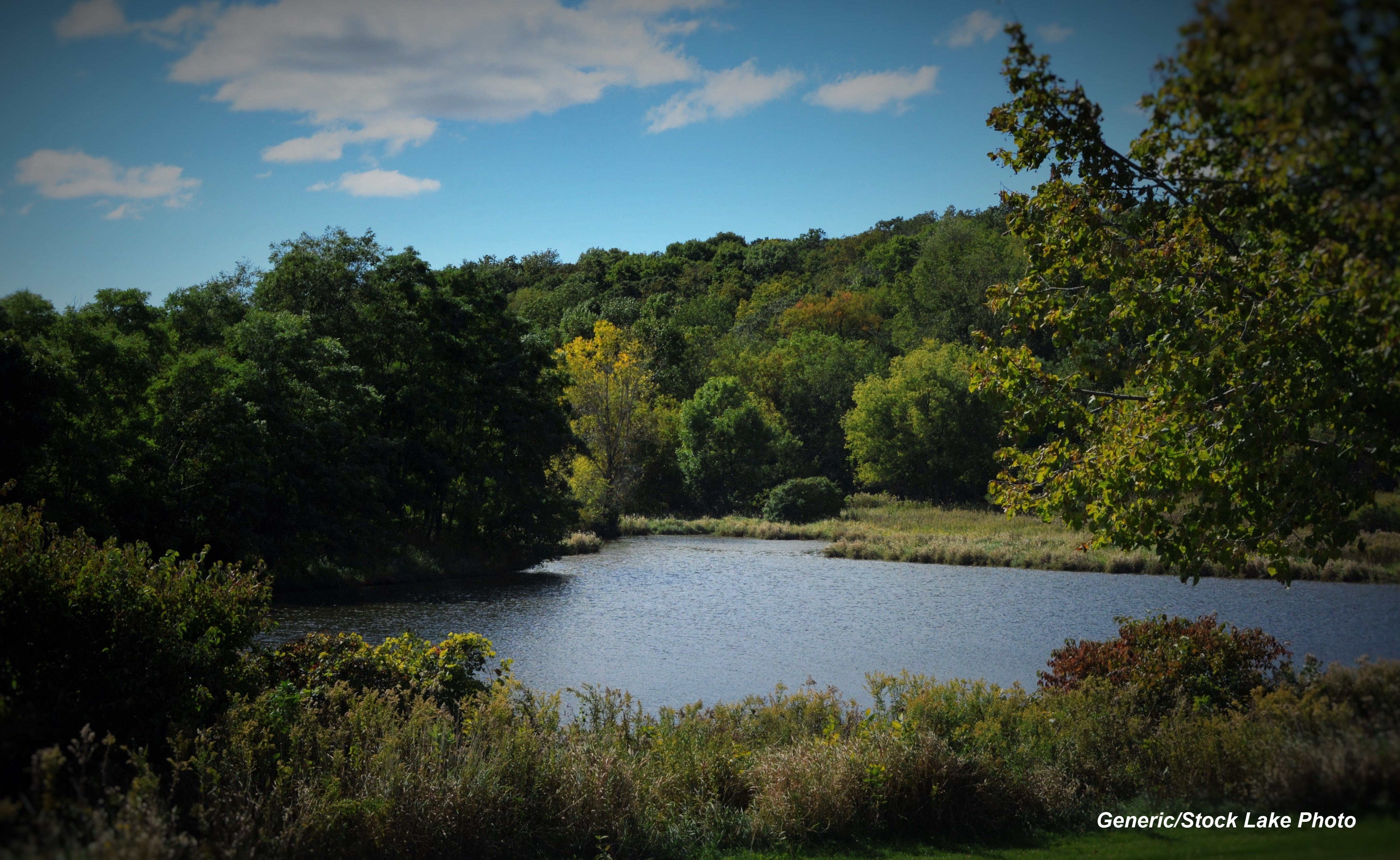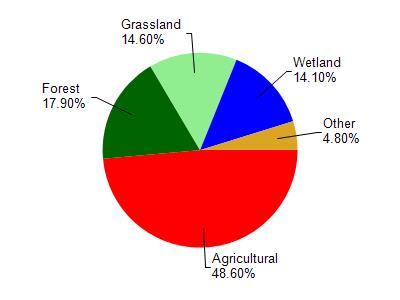
26.90 Acres
Deep Headwater
2025
Poor
Excess Algal Growth, Degraded Aquatic Vegetation, Eutrophication
Total Phosphorus
Columbia
No
No
Yes
Fish and Aquatic Life
Overview
Spring Lake, in the Swan Lake Watershed, is a 26.90 acre lake that falls in Columbia County. This lake is managed for fishing and swimming and is currently not considered impaired.
Date 2011
Author Aquatic Biologist
Historical Description
A small drainage lake at the base of the terminal moraine in the village of Pardeeville. The lake is drained by the Fox River and has clear, fertile water. Northern pike and panfish constitute the fishery. Adequate public access is not available; the lake is therefore used only lightly for recreation. Waterfowl make limited use of the areas for nesting and resting. Source: 1965, Surface Water Resources of Columbia County Spring Lake, T12N, R10E, Sections 3, 4 Surface Acres = 17.2, S.D.F. = 1.38, Maximum Depth = 28 feet
Date 1965
Author Surface Water Inventory Of Wisconsin
Condition
Wisconsin has over 84,000 miles of streams, 15,000 lakes and milllions of acres of wetlands. Assessing the condition of this vast amount of water is challenging. The state's water monitoring program uses a media-based, cross-program approach to analyze water condition. An updated monitoring strategy (2015-2020) is now available. Compliance with Clean Water Act fishable, swimmable standards are located in the Executive Summary of Water Condition in 2018. See also the 'monitoring and projects' tab.
Reports
Management Goals
Wisconsin's Water Quality Standards provide qualitative and quantitative goals for waters that are protective of Fishable, Swimmable conditions [Learn more]. Waters that do not meet water quality standards are considered impaired and restoration actions are planned and carried out until the water is once again fishable and swimmable
Management goals can include creation or implementation of a Total Maximum Daily Load analysis, a Nine Key Element Plan, or other restoration work, education and outreach and more. If specific recommendations exist for this water, they will be displayed below online.
Monitoring
Monitoring the condition of a river, stream, or lake includes gathering physical, chemical, biological, and habitat data. Comprehensive studies often gather all these parameters in great detail, while lighter assessment events will involve sampling physical, chemical and biological data such as macroinvertebrates. Aquatic macroinvertebrates and fish communities integrate watershed or catchment condition, providing great insight into overall ecosystem health. Chemical and habitat parameters tell researchers more about human induced problems including contaminated runoff, point source dischargers, or habitat issues that foster or limit the potential of aquatic communities to thrive in a given area. Wisconsin's Water Monitoring Strategy was recenty updated.
Grants and Management Projects
| Project Name (Click for Details) | Year Started |
|---|
|
|
Monitoring Projects
| WBIC | Official Waterbody Name | Station ID | Station Name | Earliest Fieldwork Date | Latest Fieldwork Date | View Station | View Data |
|---|
| 180000 | Spring Lake | 10017843 | Spring Lake -- Access | 9/15/2005 | 8/15/2025 | Map | Data |
| 180000 | Spring Lake | 113082 | Spring Lake - Deep Hole | 9/15/1981 | 8/27/2024 | Map | Data |
| 180000 | Spring Lake | 10001184 | Spring Lake | 6/1/1995 | 8/25/2022 | Map | Data |
|

Watershed Characteristics
Spring Lake is located in the Swan Lake watershed which is 80.61 mi². Land use in the watershed is primarily agricultural (48.60%), forest (17.90%) and a mix of grassland (14.60%) and other uses (18.90%). This watershed has 113.04 stream miles, 942.88 lake acres and 6,861.87 wetland acres.
Nonpoint Source Characteristics
This watershed is ranked Medium for runoff impacts on streams, Not Ranked for runoff impacts on lakes and High for runoff impacts on groundwater and therefore has an overall rank of High. This value can be used in ranking the watershed or individual waterbodies for grant funding under state and county programs.However, all waters are affected by diffuse pollutant sources regardless of initial water quality. Applications for specific runoff projects under state or county grant programs may be pursued. For more information, go to surface water program grants.
Spring Lake is considered a Deep Headwater under the state's Natural Community Determinations.
Natural communities (stream and lake natural communities) represent model results and DNR staff valiation processes that confirm or update predicted conditions based on flow and temperature modeling from historic and current landscape features and related variables. Predicated flow and temperatures for waters are associated predicated fish assemblages (communities). Biologists evaluate the model results against current survey data to determine if the modeled results are corect and whether biological indicators show water quaity degradation. This analysis is a core component of the state's resource management framework. Wisconsin's Riverine Natural Communities.
Deep headwater lake describes the depth and location of the lake in a watershed. These variables affect the lakes response to watershed variables.